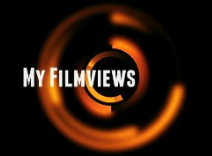
With Kinect Microsoft is trying to change the world of gaming. No longer a controller is needed to play the games as you are the controller according to the commercials. It’s supposed to be the next revolution in gaming, but could it also be the first look into the revolution of filmmaking?

Film technique has quickly developed after the first experiment done by Eadweard Muybridge, making 24 pictures of a running horse and showing them quickly in succession. The development of the film camera was the first step. Initially only movies were made of normal, every day life things (like a train arriving at a station), but slowly people started to film actual stories. When sound was added to film it changed the industry. The next revolution was the introduction of color, resulting in less black and white movies.

From the end of the seventies computers have been the next big revolution. Computers have allowed filmmakers to create new world, make it easier to add effects or even make movies completely digitally. Within the digital age big steps have been made as well. The combination of cameras and computers made the bullet time shots in the Matrix possible. Those are shots that a lot of moviegoers will remember.

Directors like Peter Jackson, Steven Spielberg, James Cameron and Robert Zemeckis are the big directors who try to make other big steps using technology.
Cameron already made effective use of special effects in The Abyss and Terminator 2 to tell his stories. Avatar was the next big step, using 3D and an almost photo realistic world.
Zemeckis has also done some pioneering work when it comes to motion capture (capturing all the moves actors make and applying them to digital characters), which resulted in The Polar Express, Beowulf and A Christmas Carol.
Making computer generated movies allow the director a lot of freedom. When everything has been animated he has complete control about the virtual camera and it can be placed at any spot at any angle you’d want to “shoot” the scene. It makes the most impossible shots possible.
Wouldn’t it be great if you could do it with real actors? You head over to the location you’ll be filming at, shoot all you scenes with your actors and sit down behind your PC to decide where you would like to put your camera. It’s something that doesn’t sound possible, but it was the first thing I thought about when looking at the possibilities Kinect offers when it’s used together with a PC.
[youtube=http://www.youtube.com/watch?v=7QrnwoO1-8A]
As is told in the video it’s not possible for Kinect to generate data for the spots that it can’t see, but the possibilities become clear. You could position your camera anywhere you’d want at any time.
Because Kinect create a 3d map of the environment it’s possible to change these values or add things in realtime as the movies below show:
[youtube=http://www.youtube.com/watch?v=P3gfMXwQOGI]
[vimeo=http://vimeo.com/17075378]
Since developers managed to get Kinect working last year a lot of innovative uses have been invented. I’m sure a lot of other impressive uses will be thought up in the coming months. It’s all very impressive and it’s easy to imagine what could be done when the idea of Kinect is used and expanded.
Put in a higher resolution camera, instead of one, use about 5 around the thing you are shooting and change the software to allow for a 360 view of the scene.
It would mean there wouldn’t be any restrictions like you’d have with a bullet time setup. It would allow the camera to move as slowly or as quickly as you’d want while manipulating time as well. It would make the most impossible camera movements possible and would mean no reshoots, because you don’t have a situation where you just didn’t have the right angle of the performances.
I hope that Hollywood sees the possibilities Kinect could offer and to create their own, better version of it. It could be an extra instrument for filmmakers and add something to the way they tell their stories and possibly be another small revolution in the movie industry.
Which possibilities can you imagine in filmmaking with such a setup? Do you think something like this would be used? Interested in your own thoughts about it.

it defnitely looks good concept but i don’t think its not yet ready for practical use in the current state. The camera can revolve around and we have the liberty to choose the camera angle but unfortunately kinect only displays what it sees and the annoying flickering will be there if you move the camera around.
multiple cameras can be helpful but again mapping them correctly will be an uphill task.
Sha
No, it’s currently not practical, but I was just thinking what this could grow into….would be cool tech…